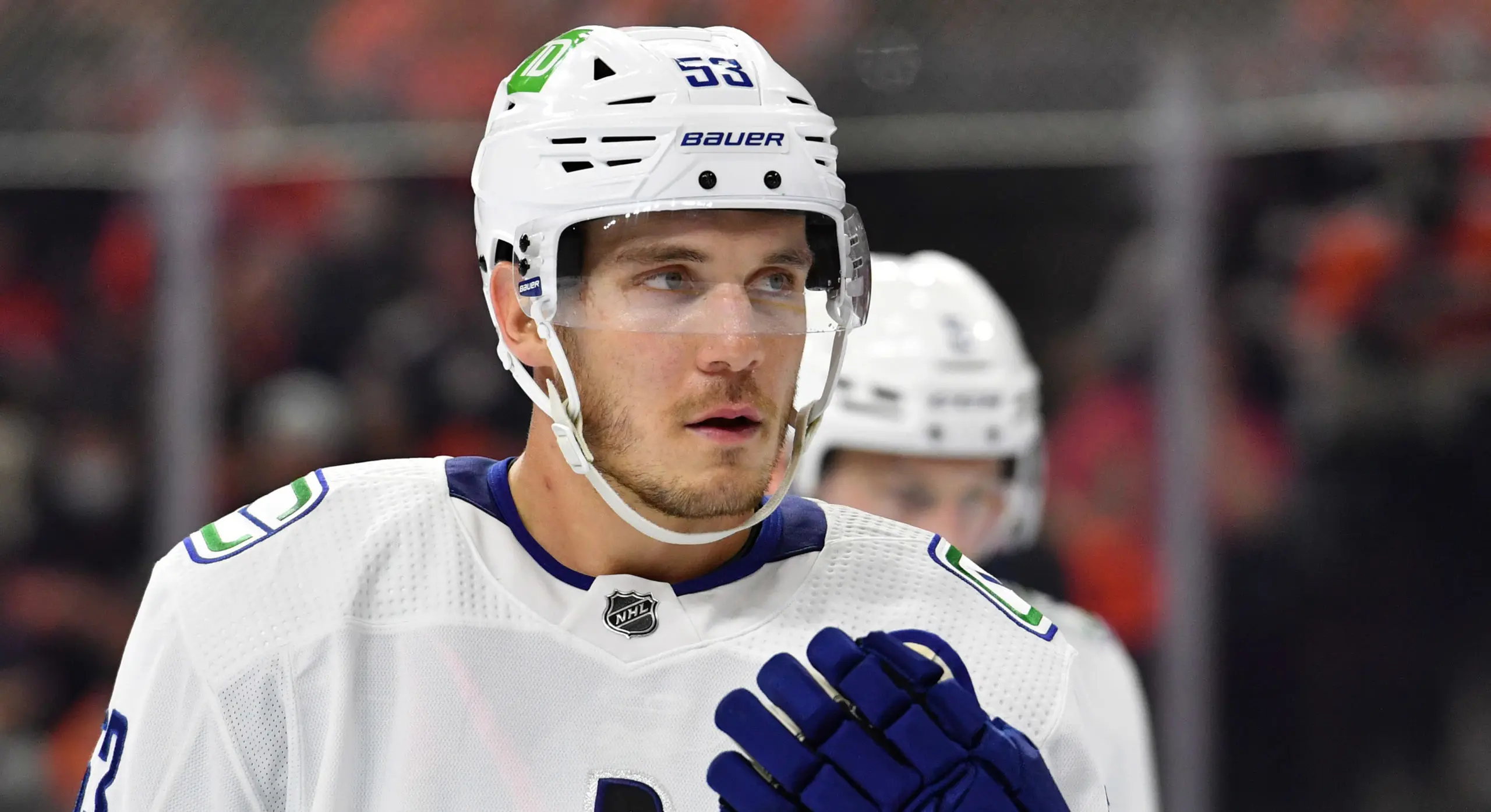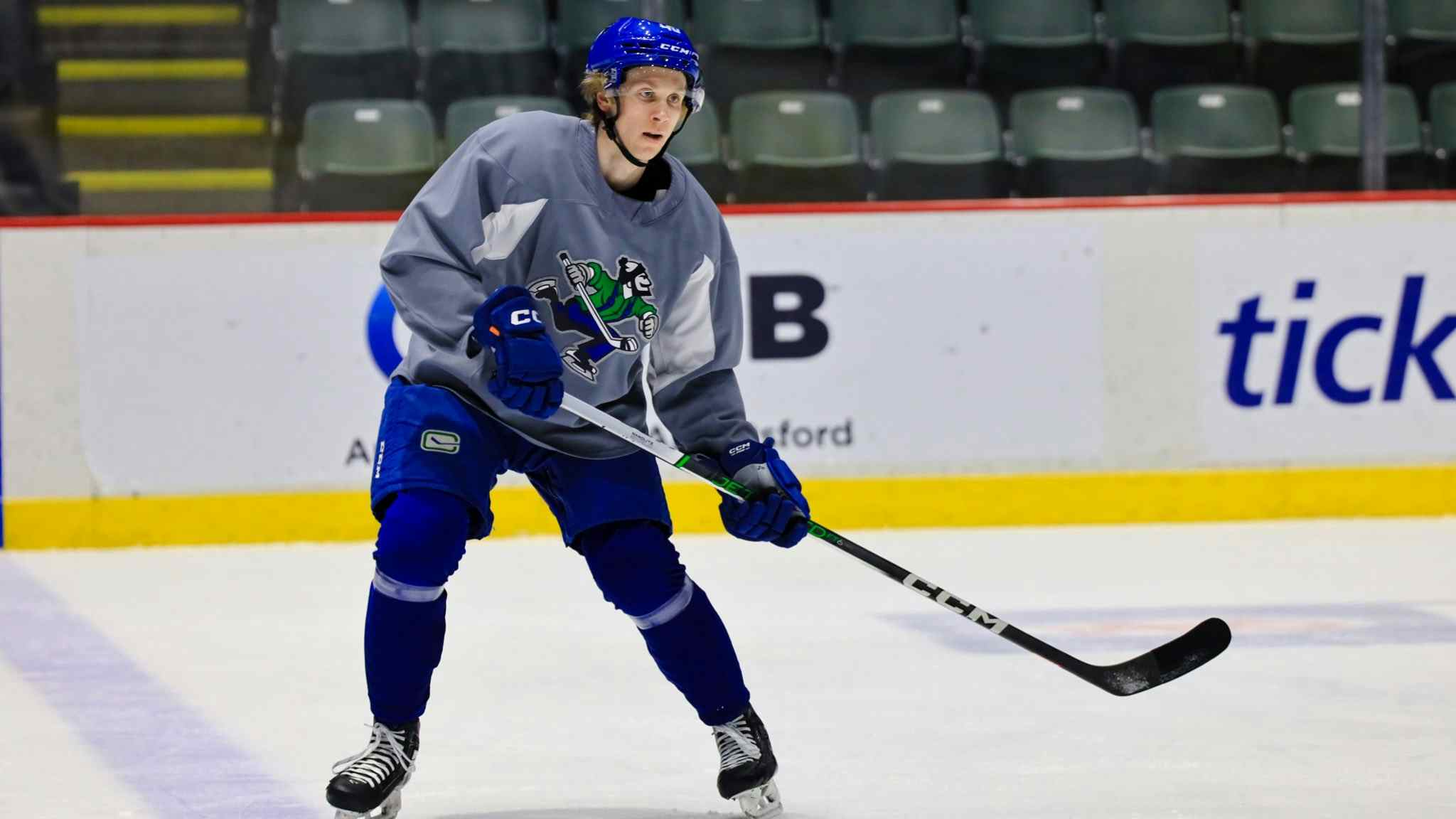Even though the Canucks are on a four-game winning streak, the team’s future is still murky at best.
Yes, Elias Pettersson and Quinn Hughes are still in their early 20s, but with the amount of money tied up in veterans such as Tyler Myers and Oliver Ekman-Larsson, the Canucks’ salary cap structure is more reminiscent of a team looking to compete now rather than later.
However, the player with even more uncertainty surrounding his future is Bo Horvat. The Canucks captain was the first foundational piece of this team’s core, but his potential next contract could cause a dilemma as to what direction the club should head towards.
Two names that will undoubtedly be brought up by Horvat’s camp during his upcoming contract talks will be Brayden Schenn and Kevin Hayes, who occupy similar roles to Horvat while also producing at a comparable rate.
| Player | Production (includes the 3 seasons before signing) | Contract |
Kevin Hayes | 44g, 53a, 98p in 147 games (from 2016-2019)
82 game pace: 25g, 30a, 55p Seven years, $50 million ($7.14mill AAV)
Signed on June 18, 2019 (age 27) Brayden Schenn | 70g, 109a, 179p in 233 games (from 2016-2019)
82 game pace: 25g, 38a, 63p Eight years, $52 million ($6.5mill AAV)
Signed on October 4, 2019 (age 28) Bo Horvat | 26g, 29a, 55p in 85 games (from 2020 to present)
82 game pace: 25g, 28a, 53p ???
Will sign in the summer of 2023 (age 28)
Horvat has seen his production trend downward in the last year and a half, which is likely related to the team’s downward spiral too. It’s important to keep in mind, though, that he scored at a 60+ point clip in both 2018-19 and 2019-20, and it won’t be surprising to see his numbers bounce back to those levels when he enters his UFA season next year.
If that happens, Horvat’s asking price will be at least $6.5 million per season on an eight-year deal, but it’ll likely be a lot closer to Hayes’ number ($7.14 mill AAV) given his role as captain and long tenure with the club. The Canucks’ offer might need to be even higher to incentivize Horvat to stay due to the team’s lack of success, but let’s pencil him down for an eight-year, $56 million ($7 million AAV) deal for now.
The question then becomes: is Horvat worth that contract? Earning $7 million a season will make him one of the 50 highest-paid forwards in the league, which is a steep price considering that the deal will run until his age-36 season.
In fact, the numbers suggest that Horvat isn’t even worth that price tag currently, let alone a decade from now.
Since the 2019-20 season, the Canucks have been outscored 97-84 with Horvat on the ice at five on five. Over that span, the team has scored 2.26 goals per 60 minutes with him playing — a good top-six rate — but also conceded an alarming 2.60 goals/60. That latter mark ranks 151st out of 219 forwards who’ve logged at least 1500 minutes of ice time at five on five, which is a disappointing mark for a player who has the reputation of being a reliable two-way forward.
With that said, those numbers are heavily influenced by Horvat’s surrounding cast, and his individual defensive game has actually been above average since the start of last season.
The graphs above show Horvat’s isolated defensive impact, with the one on the left representing the 2019-20 campaign while the one in the middle and on the left is 2020-21 and 2021-22, respectively. As you can see, the Canucks surrendered a lot more high danger chances in front of the crease in 2019-20 (which is outlined by the red highlights) that led to an expected goals against rate that was higher than league average, but that problem has been fixed since the start of last year.
We also can’t ignore the matchup role that Horvat plays; the Canucks captain has been thrown to the wolves for years now and is still playing the fourth toughest minutes amongst all forwards who’ve logged over 200 five on five minutes this season, according to
tracking data from Patrick Bacon.
With that said, there’s no denying that Horvat’s on-ice results have still been subpar at even strength for a number of years now no matter how well his individual impact grades out. He’s much closer to a $6 million player than a $7 million one, and to pay Horvat that amount into his mid-30s could make the Canucks’ salary cap situation a lot worse than it is even now.
Horvat’s off-ice impact and where the team should go from here
Taking everything into consideration, it seems obvious that Horvat needs to be moved before his contract expires.
However, that should be the last thing the club does.
Remember, Horvat is the team captain and the first core piece acquired of this iteration of the club. One of the biggest mistakes that the Canucks made following their bubble run was not retaining glue players like Christ Tanev, so do you really want a repeat of that by trading away Horvat?
Of course, no one knows for sure if he’s as popular with the team as Tanev was, but Horvat is still a highly respected figure not just in the Canucks locker room, but around the league as well. Moving on from him could upset the players, and for as much talk as there’s been about hitting “rock bottom” prior to the current win streak, things like team morale and culture are unquantifiable and could always get worse.
So while Horvat might not be worth his deal, the club should still try and keep him in Vancouver for the foreseeable future.
In the scenario that he does re-sign, the Canucks will be left in a tricky situation since they might have another contract that could age poorly. With Pettersson and Hughes entering their prime and Horvat at the tail end of his, the team can’t afford to rebuild entirely from scratch, but the significant cap commitments to the likes of Myers and OEL will make it tough to compete right away too.
The prudent move might then be to enter into a soft retool where the team trades away pieces such as Miller and accumulates future assets while waiting for Myers’ and Tucker Poolman’s deals to expire and OEL’s contract becomes more buyout-friendly.
That would mark the start of the 2025-26 season when the Canucks could still have Thatcher Demko, Brock Boeser, Conor Garland, Nils Höglander, and Vasili Podkolzin on the roster while Horvat has just entered into his 30s. The team could have a relatively clean slate of contracts on its books should they play their cards right and make more aggressive moves then.
Of course, nothing is set in stone right now, but the recent hiring of Jim Rutherford suggests that the club is willing to change course and come up with a succinct plan instead of living day by day.
That optimism might be misguided considering the recent history of this team, but for the first time in years, the Canucks seem to be heading in a new — and perhaps better — direction.







